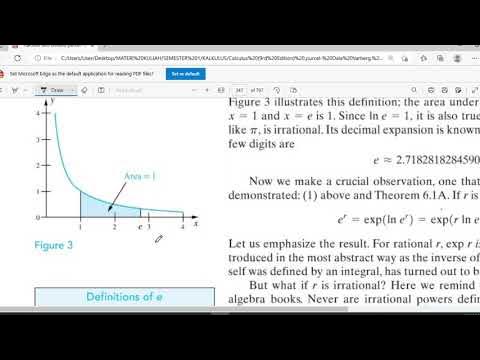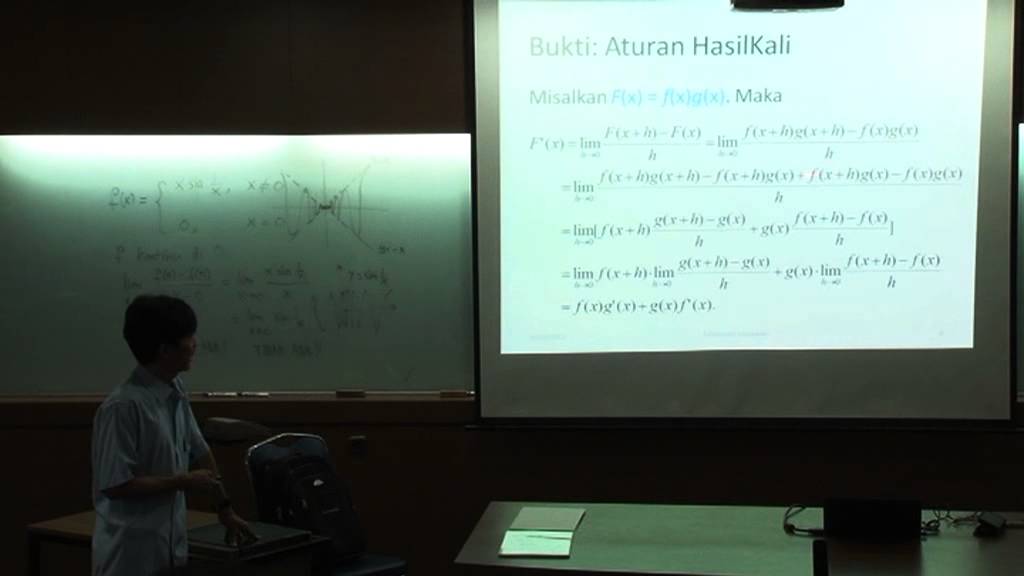What's so special about Euler's number e? | Chapter 5, Essence of calculus
Summary
TLDRThis video explores the derivatives of exponential functions, focusing on the growth patterns of functions like 2^t. Using a population growth analogy, it demonstrates how the rate of growth of exponential functions is proportional to their own value. The concept of 'mystery constants' such as 0.6931 is introduced, with the goal of explaining why e, the base of natural logarithms, is the only number where the exponential function equals its own derivative. The video also emphasizes the natural applications of exponential growth in real-world scenarios like population dynamics, cooling processes, and financial growth.
Takeaways
- 😀 The derivative of exponential functions like 2^x shows a constant relationship to the function itself, but with a proportionality constant.
- 😀 Exponentials like 2^x can be modeled as population growth, where the mass doubles each day, reflecting continuous growth.
- 😀 The rate of change of a population described by 2^x is proportional to its size, but requires calculating the derivative over smaller time intervals for precision.
- 😀 To calculate the derivative of 2^x, we need to break the function into smaller increments, and the growth rate between time points must be examined as dt approaches zero.
- 😀 A key property of exponentials is that you can decompose them as a product: 2^(t + dt) = 2^t * 2^dt.
- 😀 The mysterious constant that shows up in the derivative of any exponential function is approximately 0.6931 for 2^x, and is linked to the natural logarithm of the base.
- 😀 The derivative of exponential functions like 3^x or 8^x also demonstrates proportionality, with different constants that can be explored and identified numerically.
- 😀 The number e (≈ 2.71828) is unique in that its exponential function (e^x) is the only one where the derivative equals the function itself, making it fundamental in calculus.
- 😀 When the base of an exponential function is e, the proportionality constant in the derivative is 1, which is why e^x equals its own derivative.
- 😀 The natural logarithm (ln) connects exponential functions to their derivatives, with ln(2) explaining the proportionality constant for 2^x.
- 😀 The key takeaway is that all exponential growth processes in nature (like population growth, cooling, or investment) can be modeled using exponentials, and expressing them in terms of e simplifies understanding and calculations.
Q & A
What is the main focus of the video script?
-The main focus of the script is to explore the derivatives of exponential functions, specifically the function 2^x, and to explain why the base 'e' is considered the most important exponential.
Why does the author use the population size analogy for 2^x?
-The author uses the analogy of a population of pie creatures that doubles every day to illustrate the continuous nature of exponential growth, as opposed to discrete population jumps, making it easier to understand the concept of rates of change in exponential functions.
What is the key idea behind calculating the derivative of 2^x?
-The key idea is to calculate the rate of change of 2^x over an infinitesimally small change in time (dt), which leads to the realization that the derivative of 2^x is proportional to 2^x, with a constant factor.
How does the author explain the concept of proportionality in derivatives?
-The author explains that when calculating the derivative of 2^x, the rate of change is proportional to the value of the function itself, but with a specific constant of proportionality, which is approximately 0.6931 for 2^x.
What happens when you apply the chain rule to e^(3t)?
-When applying the chain rule to e^(3t), you take the derivative of the outer function (e^x), which is itself, and multiply by the derivative of the inner function (3t), which gives a constant factor of 3. Therefore, the derivative of e^(3t) is 3e^(3t).
What is the significance of the number 'e' in the context of derivatives of exponentials?
-'e' is the only base for which the derivative of e^x is equal to e^x itself, meaning its rate of change is exactly proportional to its value, with a proportionality constant of 1. This property makes 'e' fundamental in calculus and natural growth models.
How does the script explain the relationship between the base of an exponential and its derivative?
-The script explains that for any base 'a', the derivative of a^t is proportional to a^t, with the constant of proportionality being the natural logarithm of the base. For example, the derivative of 2^t is 0.6931 times 2^t, and this constant is the natural log of 2.
Why is the natural logarithm important in exponential derivatives?
-The natural logarithm is important because it helps to determine the proportionality constant in the derivative of any exponential function with base 'a'. It represents the rate at which the function changes relative to its initial value.
What real-world phenomena are described as following exponential growth or decay?
-Examples of real-world phenomena include population growth (where growth is proportional to population size), the cooling of hot water in a cool room (where the rate of cooling is proportional to the temperature difference), and money invested in a bank account (where the rate of interest is proportional to the current balance).
How does the script address the mystery of proportionality constants in exponential functions?
-The script addresses the mystery by showing that these constants are not random, but rather are related to the base of the exponential. By expressing any exponential function as e^(constant * t), the proportionality constant becomes directly related to the natural logarithm of the base, simplifying the relationship.
Outlines

Cette section est réservée aux utilisateurs payants. Améliorez votre compte pour accéder à cette section.
Améliorer maintenantMindmap

Cette section est réservée aux utilisateurs payants. Améliorez votre compte pour accéder à cette section.
Améliorer maintenantKeywords

Cette section est réservée aux utilisateurs payants. Améliorez votre compte pour accéder à cette section.
Améliorer maintenantHighlights

Cette section est réservée aux utilisateurs payants. Améliorez votre compte pour accéder à cette section.
Améliorer maintenantTranscripts

Cette section est réservée aux utilisateurs payants. Améliorez votre compte pour accéder à cette section.
Améliorer maintenant5.0 / 5 (0 votes)






